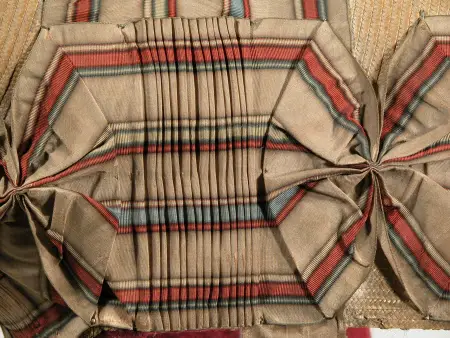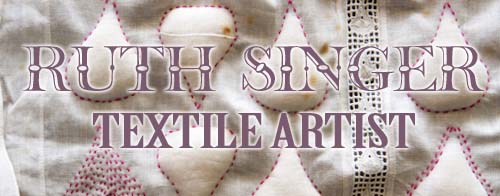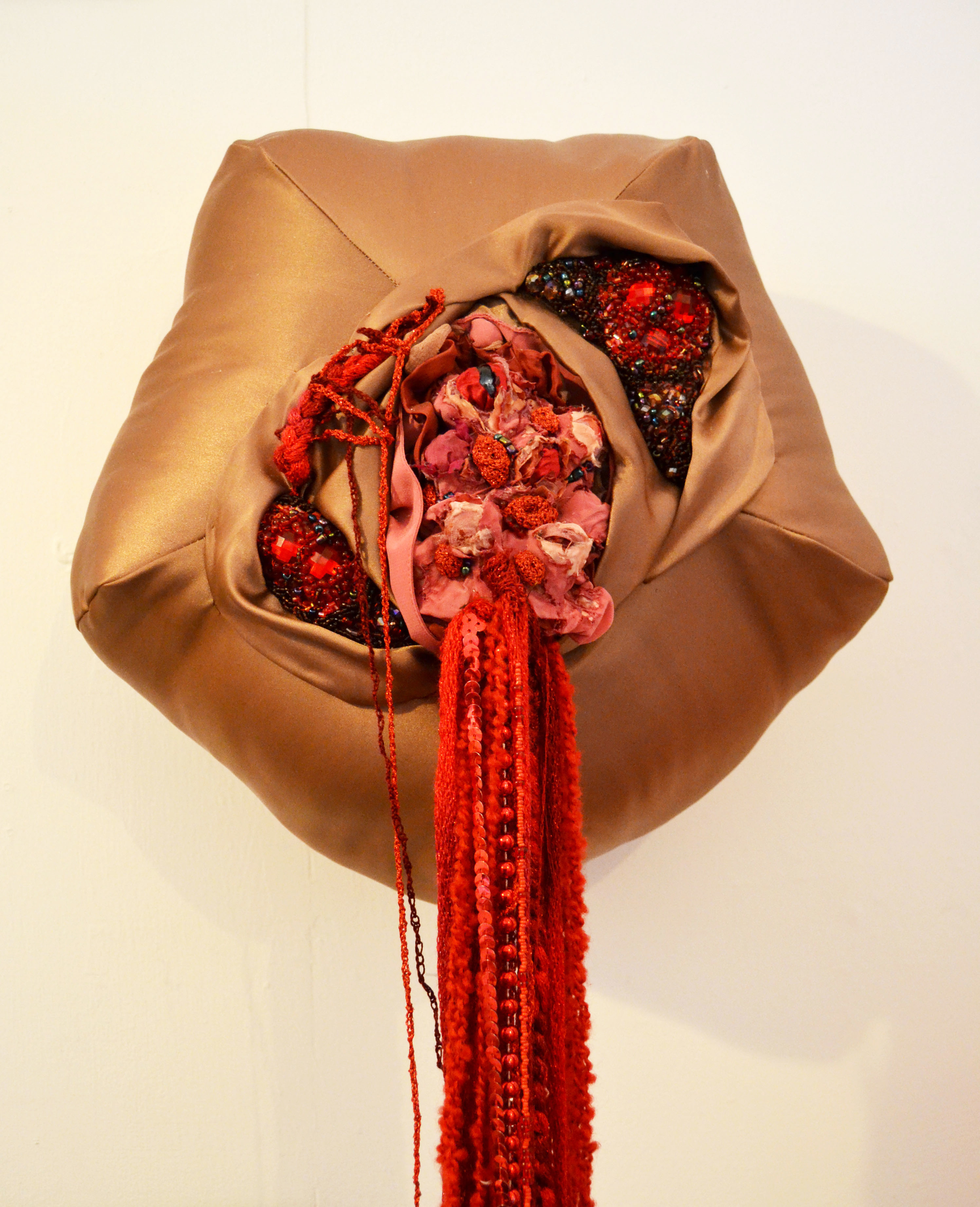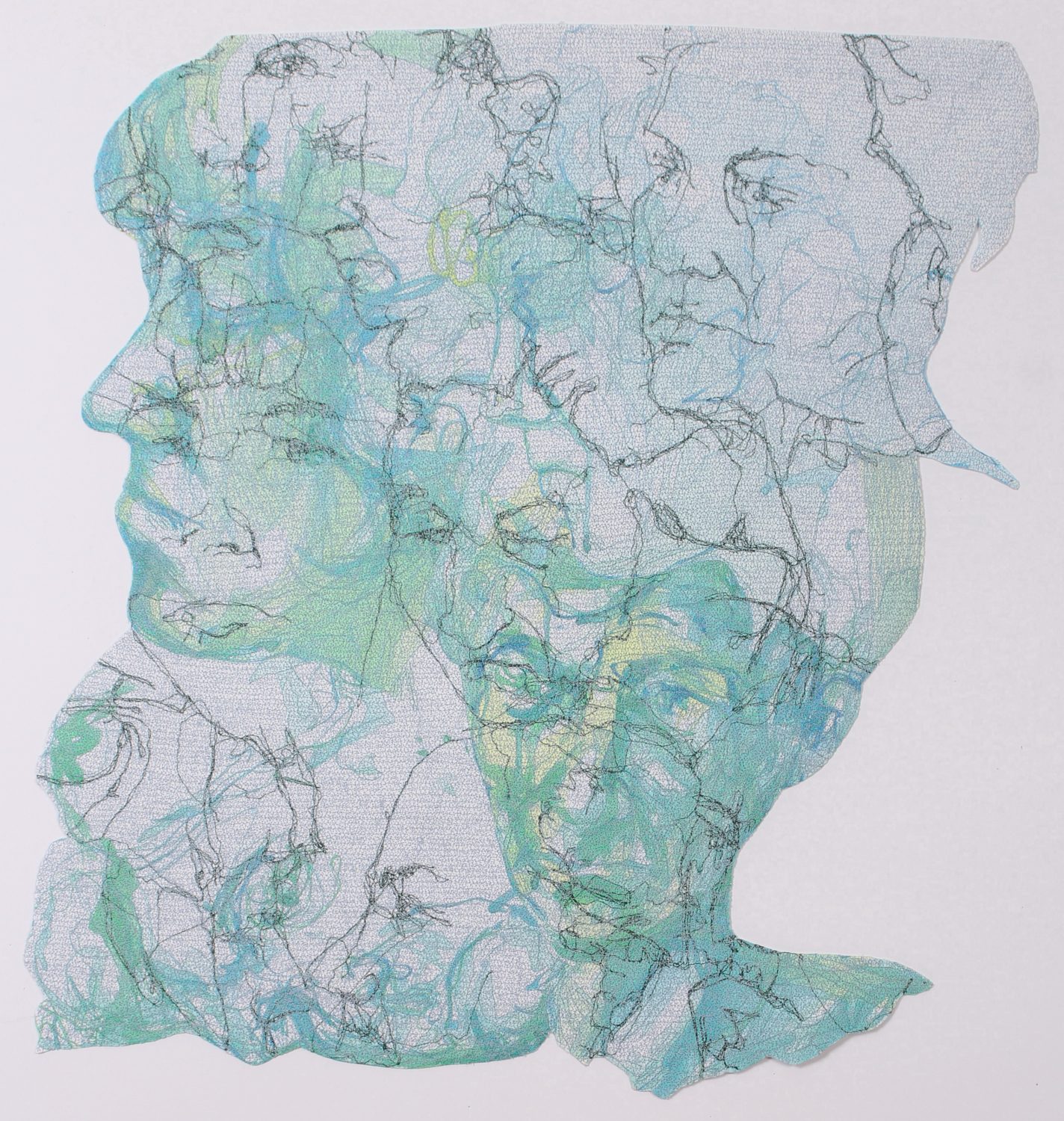Antique ribbons can be pretty special items in themselves, but when they are used to create interesting decorations and trimmings, ribbons become something even more amazing. Ribbons have been used for hundreds of years to decorate hats, dresses and accessories.
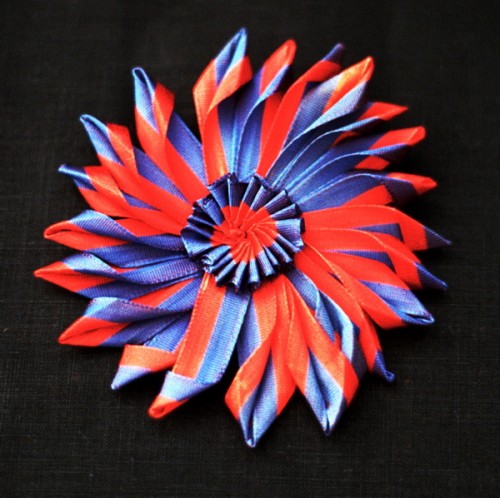
Beautiful ribbons were woven in Coventry (as well as other places) from the 1700s which were pleated, gathered and arranged to make stunning hat decorations, taking a bonnet from basic to beautiful.
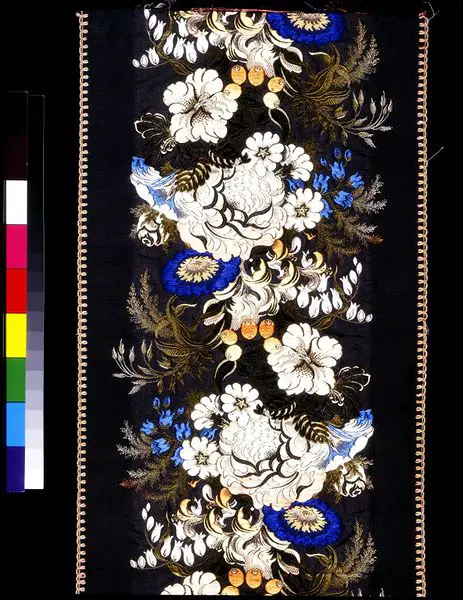
Extra-wide ribbons were made specifically for trimming dresses and millinery and their designs could easily be enhanced by the methods of folding and stitching used, as shown in this example where the stripes are manipulated to create decorative effects.

I recently came across illustrations via Pinterest from a German women’s magazine called Der Bazar dated 1871 on Google books which shows several fantastic pleated ribbon trims which I am keen to try out myself, and you can often spot folded and manipulated ribbon trims on original garments and in fashion plate illustrations in the later 19th century.

In the 1920s, pleated and manipulated ribbons had another moment under the spotlight of fashion as ribbon pleated and folded into sunbursts and stars shone out from the sides of cloche hats. Cockades or trimmings were made at home, as well as by professional milliners. A hat could be updated and transformed with a bit of ingenuity and ribbon.
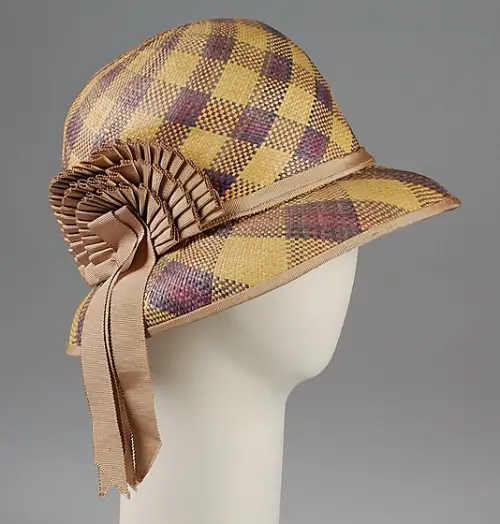
I bought this vintage hat a few years ago and was intrigued by the folded trim. It took a few goes to figure it out and quite a few more goes for the technique to stick in my head – it is not at all simple, but I figured it out using weave lines in in the grosgrain ribbon as my guide.
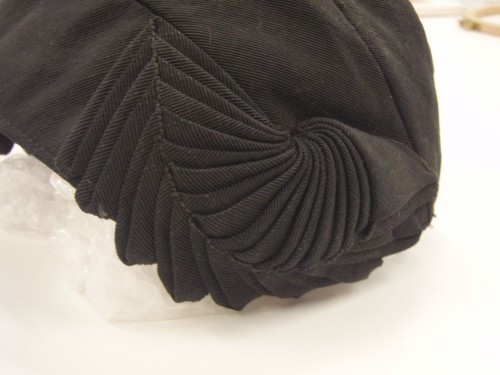
My version of the technique is in my book Fabric Manipulation, alongside a lot of other folding and manipulating techniques for ribbon work. A lot of these are inspired by Indian ribbon work using real metal ribbon, known as Gota.
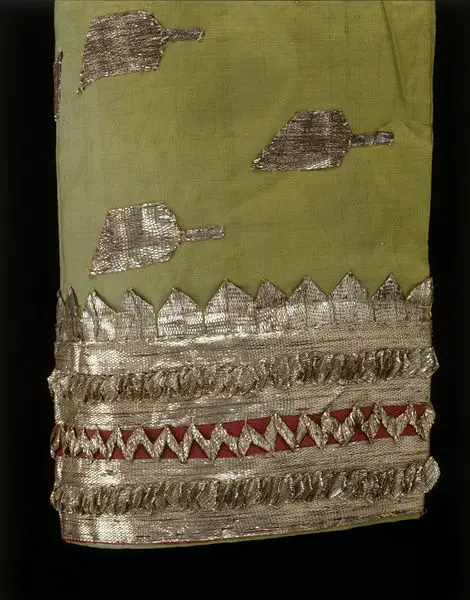
Gota work was traditionally used to decorate luxurious costumes and clothing in the 19th century alongside fine silks and metal thread embroidery. The pure metal wefts of the ribbon allow it to be folded precisely to create intricate 3D folds and twists, and the ribbon could also be embossed for added effects. Nowadays, most gota work is done in inferior plastic ribbon which has neither the sheen, weight or crispness of the metal ribbon, but still looks pretty gorgeous.
You can find more ribbon work and related ideas in my Pinterest boards on Fabric Manipulation, particularly the pleating board and the appliqué board. One day I’ll have time to try them all out – in the mean time, please post links to any other interesting ribbon resources and if you have tried any of the techniques, please share them.
—
Ruth Singer creates detailed and intriguing textile artworks inspired by historical textiles, museum objects, personal heritage, memory and stories. She uses natural and recycled textiles combined with hand stitching as well as fabric manipulationtechniques to create detailed surface texture. Recently she has incorporated photography, experimental dyeing and found objects into her work, and has also developed exhibition pieces working in paper. Find out more at her website.

